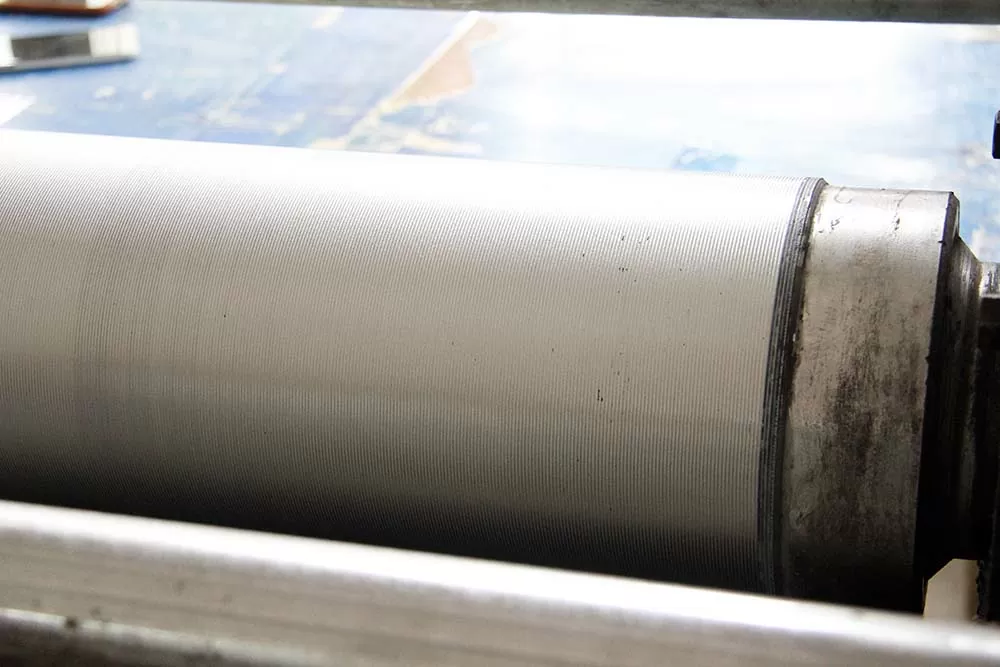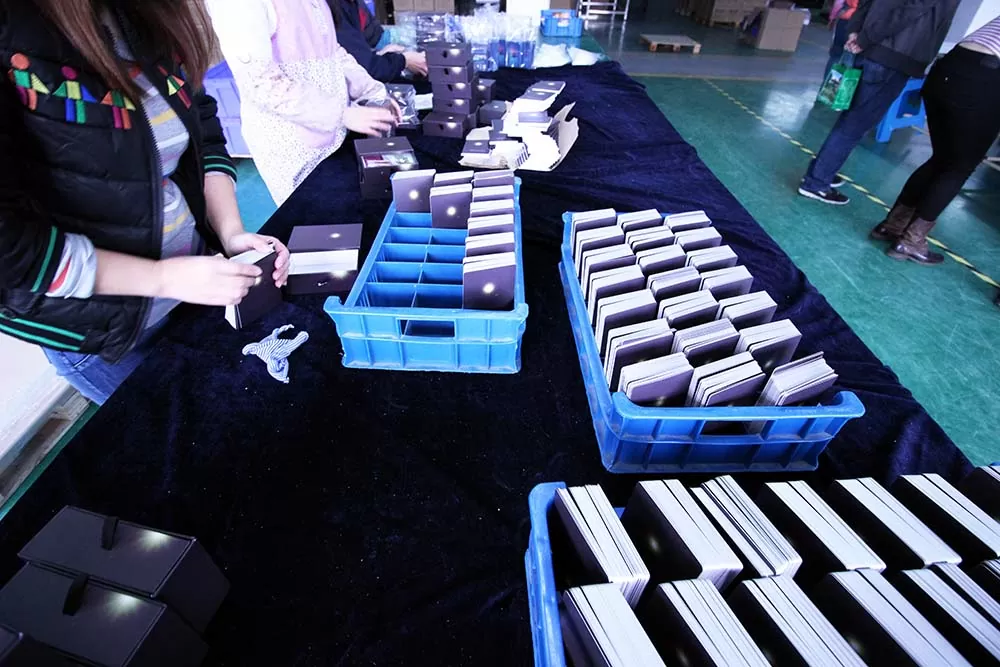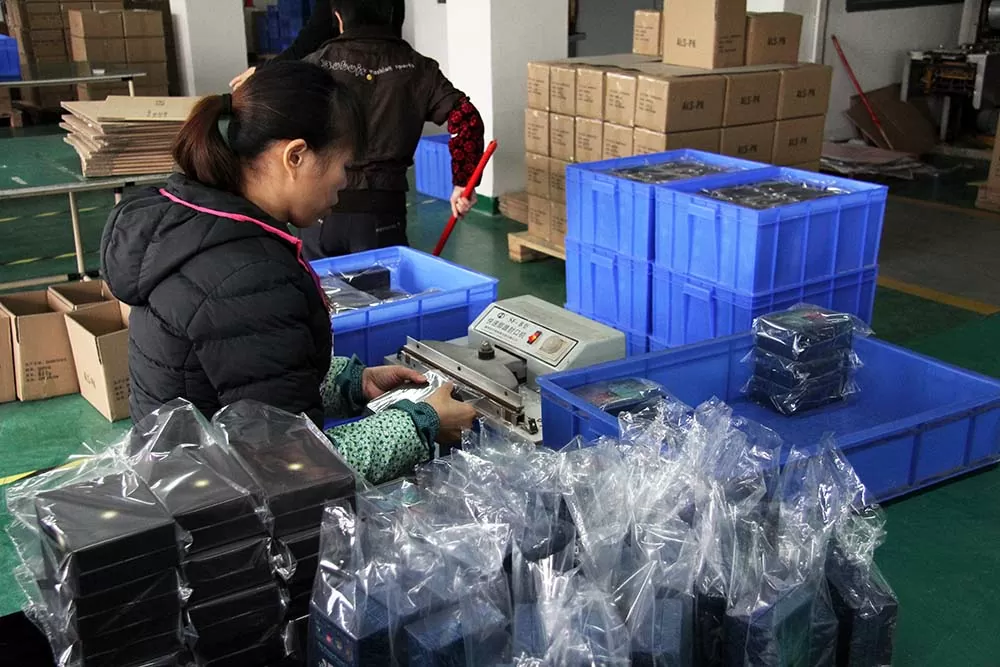PrintNinja - online printing made easy for creators
Card Game Production
This article will teach you about the process of card game production.
Once both the cards and tuck boxes have been printed onto parent sheets, they are ready to be cut, assembled, and packaged together.
Trimming Cards
The playing card parent sheets are fed one at a time through a calibrated trimming machine. As the sheet makes each turn, blades cut out strips of cards until each card is cut out and stacked in a deck. Our domestic facility uses a rotary die cutter for all of our card projects. The printed sheets will pass through a drum that holds a die with the size and shape of your cards, held on by powerful magnets. The die trims for size and rounded corners at the same time.
Die Cutting Boxes
A tuck box’s unique shape requires the die-cut method to extract the box and its unique flaps from the parent sheet. Die-cutting requires an operator to form blades to the box’s shape and use heavy pressure to cut out the design, as seen in the video below.
Smoothing and Rounding Cards
The trimming machine leaves rough edges around the perimeter of the cards and square corners. To shape them, an operator pushes stacks of cards through a “smooth edge machine” installed with the appropriate die size. The pressure of the cards being pushed through the dies leaves the edges smooth and rounds the corners at the same time. Most playing cards have rounded corners to prevent the corners from being damaged; however, some creators do request square corners.

Adding Linen Texture Finish
Linen texture is a specialty finish that adds a tactile crosshair texture. Bicycle branded playing cards are known to have this linen finish. The texture is applied after your cards are printed on a parent sheet and before they are cut to size.
The printed sheet is forced under a heavy metal roller with the crosshair pattern. The weight of the cylinder applies it’s marks to the printed paper. These sheets are then trimmed to size and put through the rounded corner machine.

Assembling Cards into Tuck Boxes
When all the pieces are printed and cut, all that’s left is to assemble them together. Cards are organized on parent sheets in the order that they are to be assembled into each box, so collation is taking place at the same time they are being trimmed.
The cards arrive at the assembly line in crates with each deck completed and separated. Tuck boxes are folded to form and have a glue dot applied to the bottom flap for extra durability. Cards are then placed inside and sealed.
Shrink-wrapping Final Product

Most card games will be shrink wrapped for added protection from theft and dirt. This is a necessary step if you plan to sell your game to retailers, who require your games to be delivered in shrink wrap and sometimes even with hang tags applied.
A shrink wrap machine works in three steps:
- The operator wraps the box in plastic shrink film.
- The film is sealed by a heavy clamp on the machine, with a straight seam line.
- The machine applies heat to the film that release the cold air out of tiny holes, causing the film to shrink to the shape of the box.